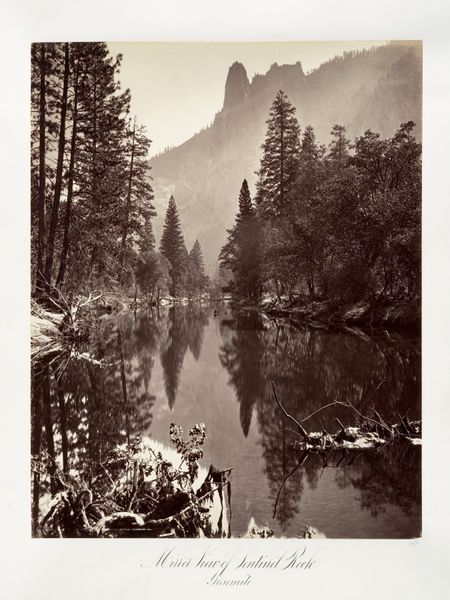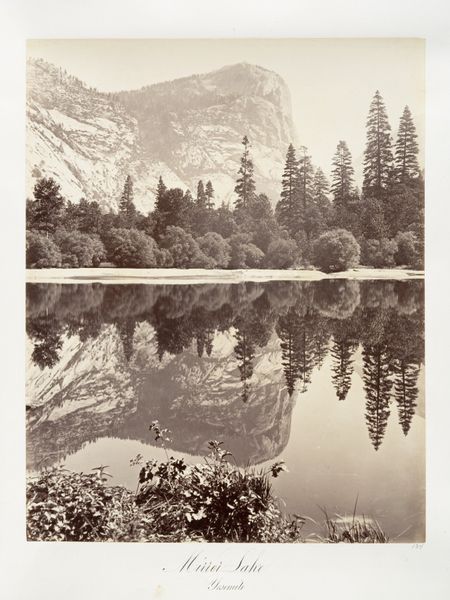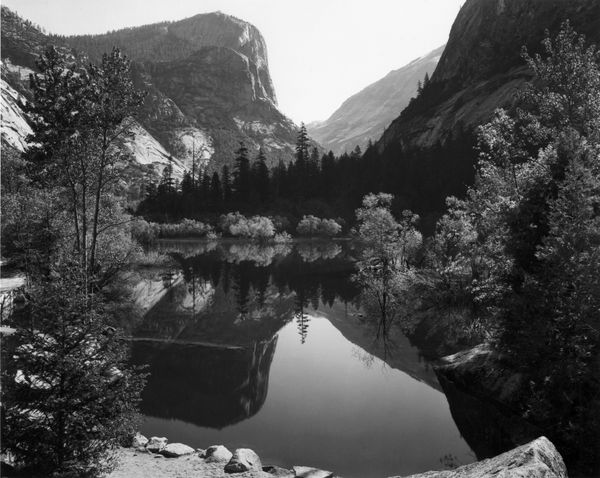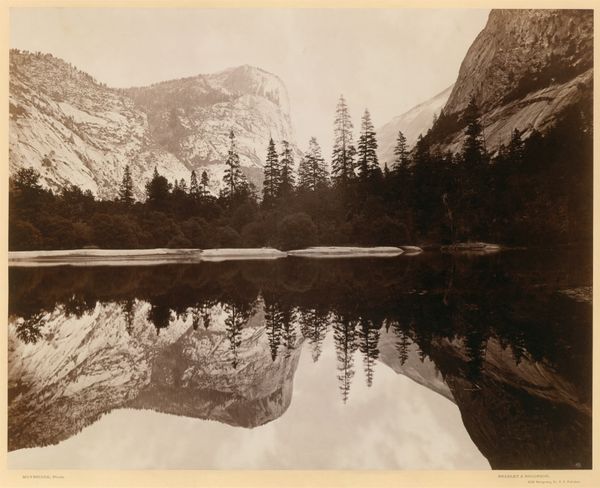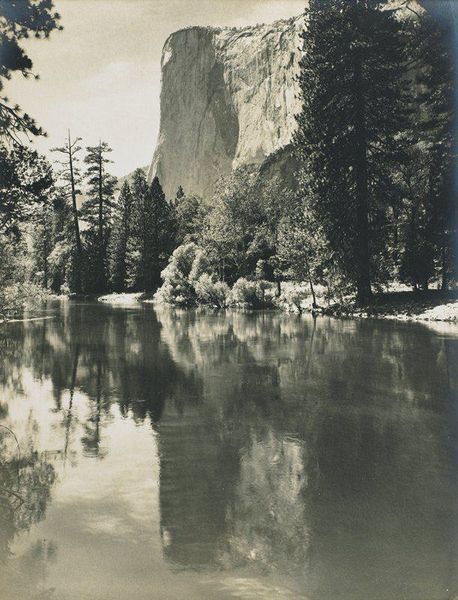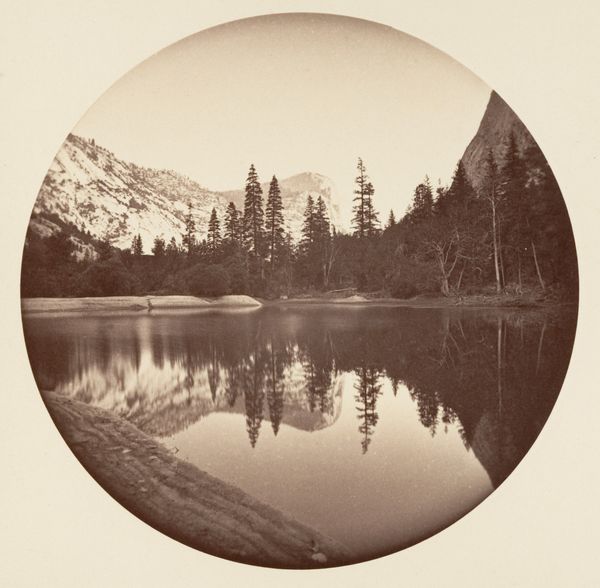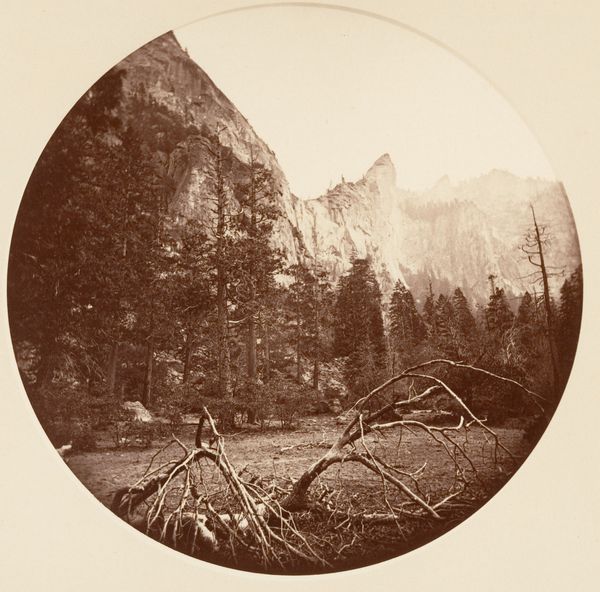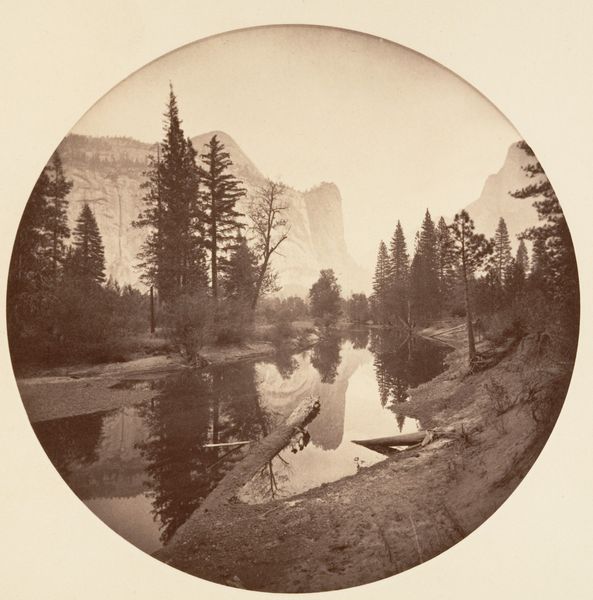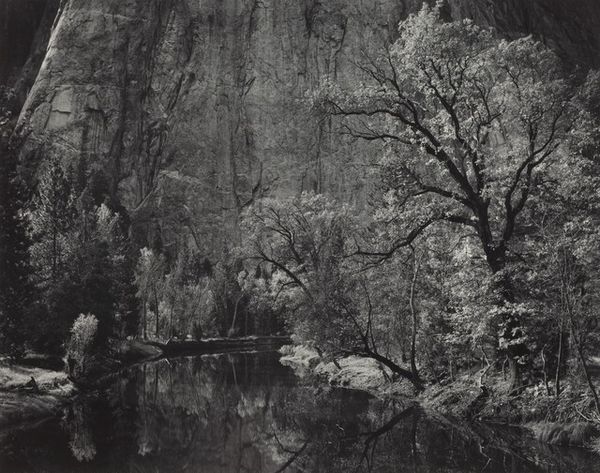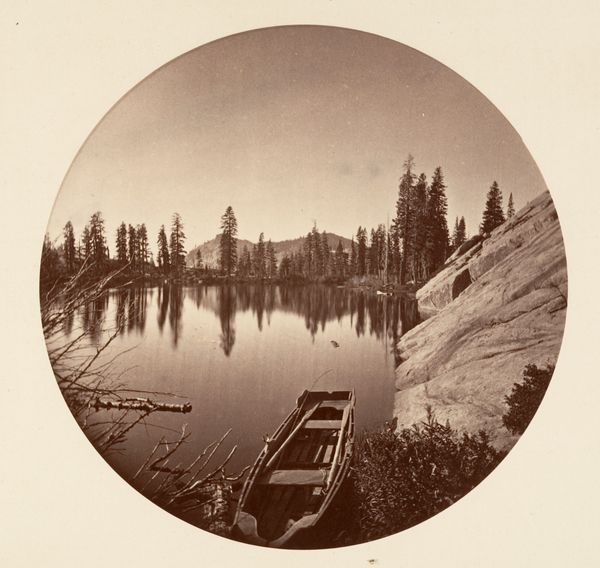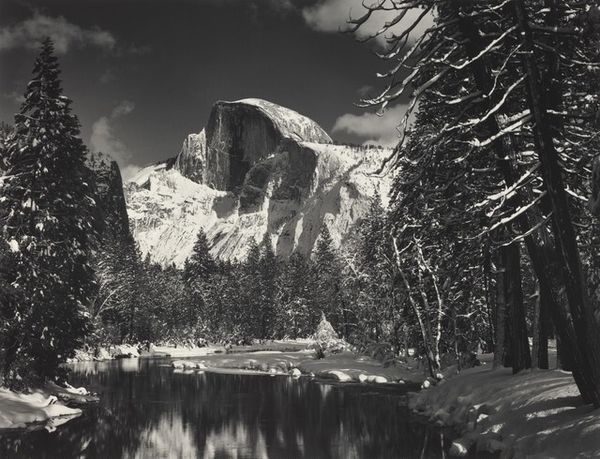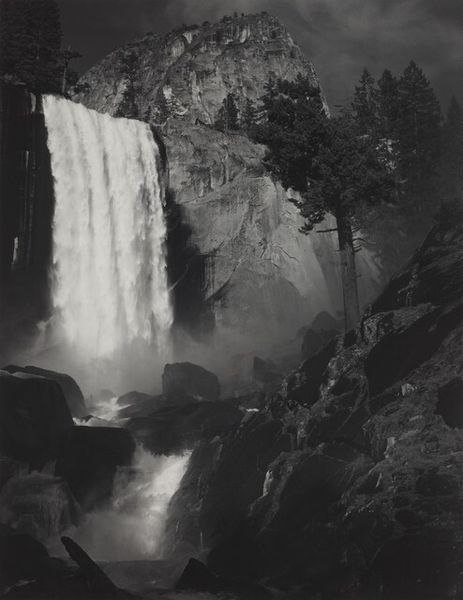
albumen-print, photography, albumen-print
#
albumen-print
#
impressionism
#
landscape
#
luminism
#
nature
#
photography
#
albumen-print
Dimensions: 12 1/16 x 8 1/16 in. (30.64 x 20.48 cm) (image, sheet)18 3/8 x 12 7/16 in. (46.67 x 31.59 cm) (mount)
Copyright: Public Domain
Editor: Here we have Carleton Watkins’s photograph, "Three Brothers," made sometime in the late 19th or early 20th century, using the albumen print process. The sepia tones give the landscape a dreamy, almost mythical quality. What’s most striking is the perfect reflection in the water – it doubles the grandeur! How do you interpret this work? Curator: The doubling is indeed key. It echoes a symbolic gesture toward reflection in the metaphysical sense. Watkins, and his contemporaries in the American West, like Ansel Adams, captured the sublime, but did they merely point their cameras, or were they conjuring something deeper? Notice how the composition leads the eye upward, then down into the mirroring depths. Editor: It’s like two worlds, one real and one…idealized? Curator: Perhaps. Or consider the “Three Brothers” of the title – what if these are not merely three rock formations, but an echo of figures from myth, legend, or even a familial archetype present in the collective unconscious? Photography at this time aspired to art – and art aimed at conveying an epic message. Look at the way the light drapes across the stone; how does that play into the overall feeling of permanence? Editor: It really does imbue the scene with a sense of timelessness. And the albumen print process – was that intentional, to further remove it from the present day? Curator: Exactly! Watkins uses that historical process to heighten this very sensation. Every photographic method carries its own historical weight. Editor: I see the picture with new eyes now – thinking about the cultural meaning embedded in its materials, its composition and even its title! Curator: The image functions as a mirror for us, asking how we interpret the enduring stories coded within it.
Comments
No comments
Be the first to comment and join the conversation on the ultimate creative platform.
